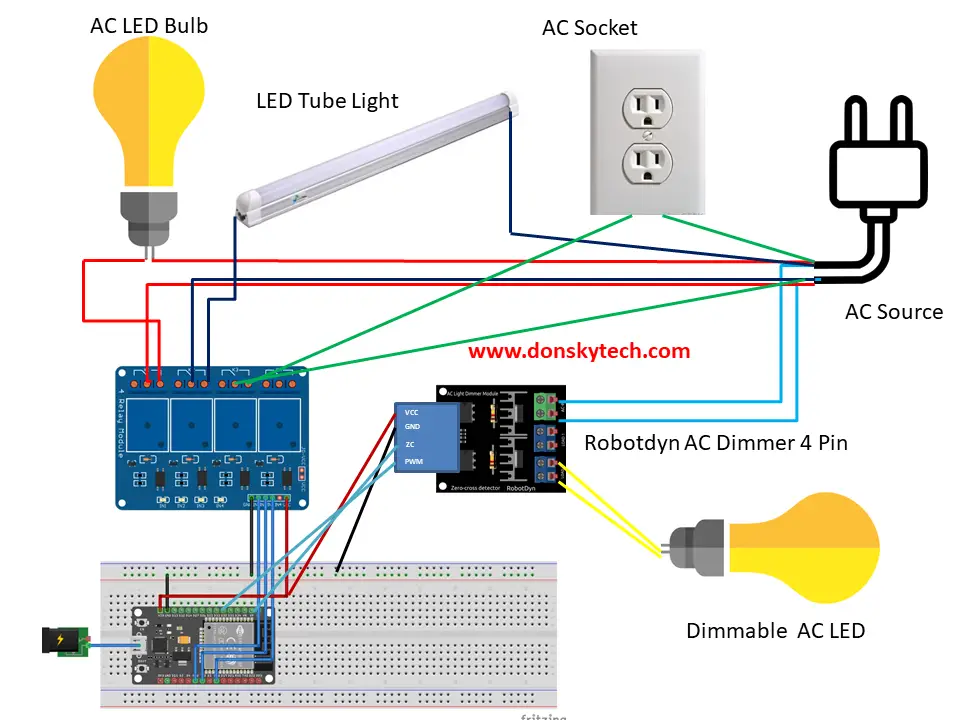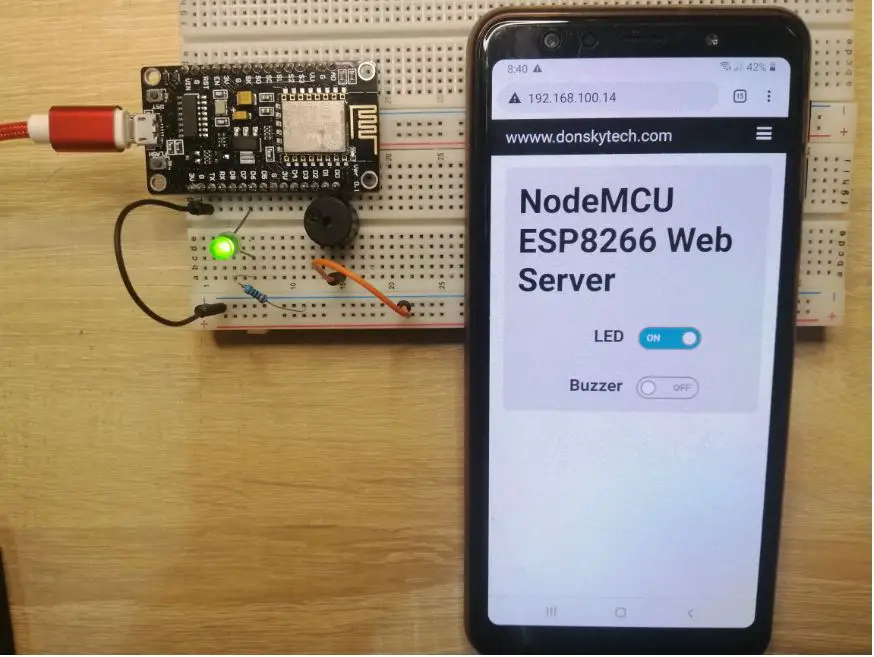-

ESP32 Home Automation Project
This post discusses how to create your own ESP32 Home Automation Project that powers AC load and is controlled thru your mobile phone.
-

Control WS2812B/Neopixels Using Mobile Phones and Raspberry Pi – Final
This is the final post on how you can control your WS2812B Neopixels Using your mobile phones and raspberry pi.
-

Create Flask Web Application in Raspberry Pi
This post explains how to install and create a web application using Flask and deploy it to your Raspberry Pi. We used it to control our WS2812b Neopixels effects using our mobile phones.
-

Wiring WS2812B Neopixels using Raspberry Pi
This post discusses the wiring of our WS2812B Neopixels to your Raspberry Pi. It also explains the luma.led_matrix library on how we can control the effects on each addressable LEDs
-

Control WS2812B/Neopixels Using Mobile Phones and Raspberry Pi
In this project we will control our WS2812B Neopixel effect using our mobile phone and raspberry pi.
-
NodeMCU ESP8266 Web Server Tutorial Series
This project tutorial series will discussed how to create your own ESP8266 Web Server using the NodeMCU module. The web server application that we are gonna be creating is used to control our electronic components.
-

Install ESP8266 File Uploader in Arduino IDE for SPIFFS
In this post we are going to show how you can install the ESP8266 File Uploader in your Arduino IDE so that you can use SPIFFS in your web server Internet of Things application.
-

ESP8266 NodeMCU Web Server: No Page Refresh using AJAX and Javascript
This post discusses how we can make our NodeMCU ESP8266 Web Server more responsive and reduce the page refresh or flickering using the AJAX or XMLHttpRequest API.
-

ESP8266 NodeMCU Web Server: Control components from your Mobile Phones
In this post we are going to discuss how we can control our electronic components using our mobile phone thru the use of the ESP8266 NodeMCU Web Server. We connect to our web server thru our mobile phones browser and control whatever components we like.
-

Installing ESP8266 Core to Arduino IDE
In this post we are going to show how to install the Add On (ESP8266 Core) developed by the ESP8266 community so that you can program this chip using your Arduino IDE.






